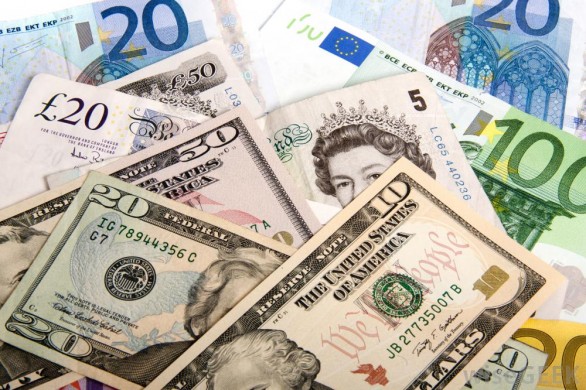GEICO is probably the best investment Buffett ever made. Much of this success is linked to what we looked at in the last newsletter: the terrific performances coming from the underwriting side of GEICO’s business. But what turbo-charged the return for Berkshire Hathaway was the amazing amount of wealth creation generated by the person in charge of the equity investments of GEICO’s insurance float. Lou Simpson’s record rivals that of Buffett at Berkshire.

The great hire
Lou Simpson, at 42, after working at a number of investment fund companies, responded to an advertisement placed by Jack Byrne for a new chief investment officer in 1979. He and three others were shortlisted for interview.
Interviewing investors was something that Buffett could help with, given his keen interest in investment approaches and the temperament required of a good investor. Thus it was that the controller of 30% of GEICO was asked to interview the four candidates.
Immediately after spending four hours with Simpson Buffett called Byrne and told him to stop the search, they had found the guy they needed.
Perhaps what Buffett said to Institutional Investor magazine seven years later gives us a clue as to what Buffett discovered at that meeting, he said Simpson “has the ideal temperament for investing…He derives no particular pleasure from operating with or against the crowd. He is comfortable following his own reason”.
Buffett so admired Simpson that he regularly praised his handling of the GEICO portfolio in letters to BH shareholders. Buffett really did hand over the baton to Simpson, not knowing what transaction had taken place until ten days after the end of the month.
“Lou has the rare combination of temperamental and intellectual characteristics that produce outstanding long-term investment performance. Operating with below-average risk, he has generated returns that have been by far the best in the insurance industry.” (Letter to BH Shareholders 1984)
“Lou takes the same conservative, concentrated approach to investments that we do at Berkshire, and it is an enormous plus for us to have him on board.” (Letter to BH Shareholders, 1995)
What could prompt Buffett to think so highly of Lou Simpson?
In this section I’ll set out what Simpson achieved at GEICO in his first 25 years. When he started the firm’s annual income from selling insurance policies was about $0.7bn. But the operational team expanded the client base greatly, thus by 2004 there was $8.9bn of annual revenue.
Directly related to those premium volumes was the amount in the float. In the 1980s this was merely a few hundred million dollars, but it grew to be $2.5bn by the mid-1990s, and $6bn in 2004. But much of the float would have been invested in government bonds and other securities rather than equities, and so Simpson generally had less than half the float for his share portfolio.
| YEAR | Berkshire Hathaway float including GEICO’s, $bn | GEICO float, $bn | Lou Simpson’s portfolio, $bn | ||
| Start 1996 | 6.4 | 2.6 | |||
| 1997 | 7.1 | 2.9 | |||
| 1998 | 22.8 | 3.1 | |||
| 1999 | 25.3 | 3.4 | |||
| 2000 | 27.9 | 3.9 | |||
| 2001 | 35.5 | 4.3 | 2.0 | ||
| 2002 | 41.2 | 4.7 | |||
| 2003 | 44.2 | 5.3 | |||
| 2004 | 46.1 | 6.0 | 2.5 |
The table below shows the returns that Simpson earned on that money. Note two things:
- Out-performance
Most fund managers would consider themselves well ahead of the pack if they manage an annual average out-performance of a mere 1% per year – Simpson was at 6.8%. To give you some idea of the long term significance of this: a $10,000 investment compounding at 13.5%, the rate on the S&P, gives $237,081 after 25 years; if compounded at Simpson’s 20.3% it produces $1,015,408.
- Under-performance
All investors have years where they underperform the market – Simpson underperformed for three years in a row. When this happens, don’t worry, stick to sound investment principles and you’ll be OK over the long-run. Simpson, the value investor seemed out of step with the irrational exuberance of the late 1990s dot-com boom. He stuck to his principles and gave great results in the years following the 2000 crash.
Portrait of a Disciplined Investor
Lou Simpson
Return from
Year GEICO Equities……… S&P Return ………….. Relative Results……….BH change in market value
1980 ………….. 23.7%………………. 32.3%………………………(8.6%)………………………….32.8%
1981 …………… 5.4%…………………(5.0%)……………………….10.4%………………………….31.8%
1982 …………..45.8%…………………21.4%………………………..24.4%………………………….38.4%
1983 …………..36.0%…………………22.4%……………………….13.6% …………………..…….69.0%
1984 ……………21.8%…………………6.1% …………….…………..15.7%………………………… (2.7%)
1985 ………….. 45.8%………………..31.6% ………….…………… 14.2%…………………………..93.7%
1986 ………… .38.7%…………………18.6% ………………………. 20.1%………………………….14.2%
1987 ………….(10.0%)………………..5.1% ……………………….. (15.1%)………………………….4.6%
1988 …………. 30.0%……………….16.6%…………………………..13.4%………………………….59.3%
1989 …………. 36.1%………………. 31.7%…………………………. 4.4%……………………….84.6%
1990 ………….. (9.9%)……………….(3.1%)………………………. (6.8%)………………….(23.1%)
1991 ………….. 56.5%………………….30.5%………………………..26.0%…………………….35.6%
1992 ……………10.8%………………….7.6%……………………………3.2% …………………29.8%
1993 ………….. 4.6% ………………….10.1% …………………….…..(5.5%) ……….……….38.9%
1994 …………..13.4%……………………1.3% ………………..………..12.1%……………………25.0%
1995 …………..39.8%…………………..37.6%…………………………..2.2%……………………57.4%
1996 …………..29.2%…………………. 23.0% ……………..………… 6.2% ……………..…….6.2%
1997 …………..24.6%……………………33.4%…………………………(8.8%) …………………..34.9%
1998 ……………18.6%……………………28.6%……………………….(10.0%)………….…………52.2%
1999 …………… 7.2%…………………….21.0% ……………………….(13.8%)…………………(19.9%)
2000 ……………. 20.9%…………………(9.1%)……………………….. 30.0%…………………….26.6%
2001 ……………. 5.2% …………………..(11.9%)…………………..…… 17.1%………………………6.5%
2002 ……………..(8.1%)…………………(22.1%)……………….……… 14.0%…………………….(3.8%)
2003 …………….38.3%…………………..28.7%…………………………..9.6%………………………15.8%
2004 …………….. 16.9%………………….10.9%…………………………..6.0% …………………..4.3%
Average Annual
Gain 1980-2004……………….
………………To read the rest of this article, and more like it, subscribe to my premium newsletter Deep Value Shares – click here http://newsletters.advfn.com/deepvalueshares/subscribe-1

 Hot Features
Hot Features













